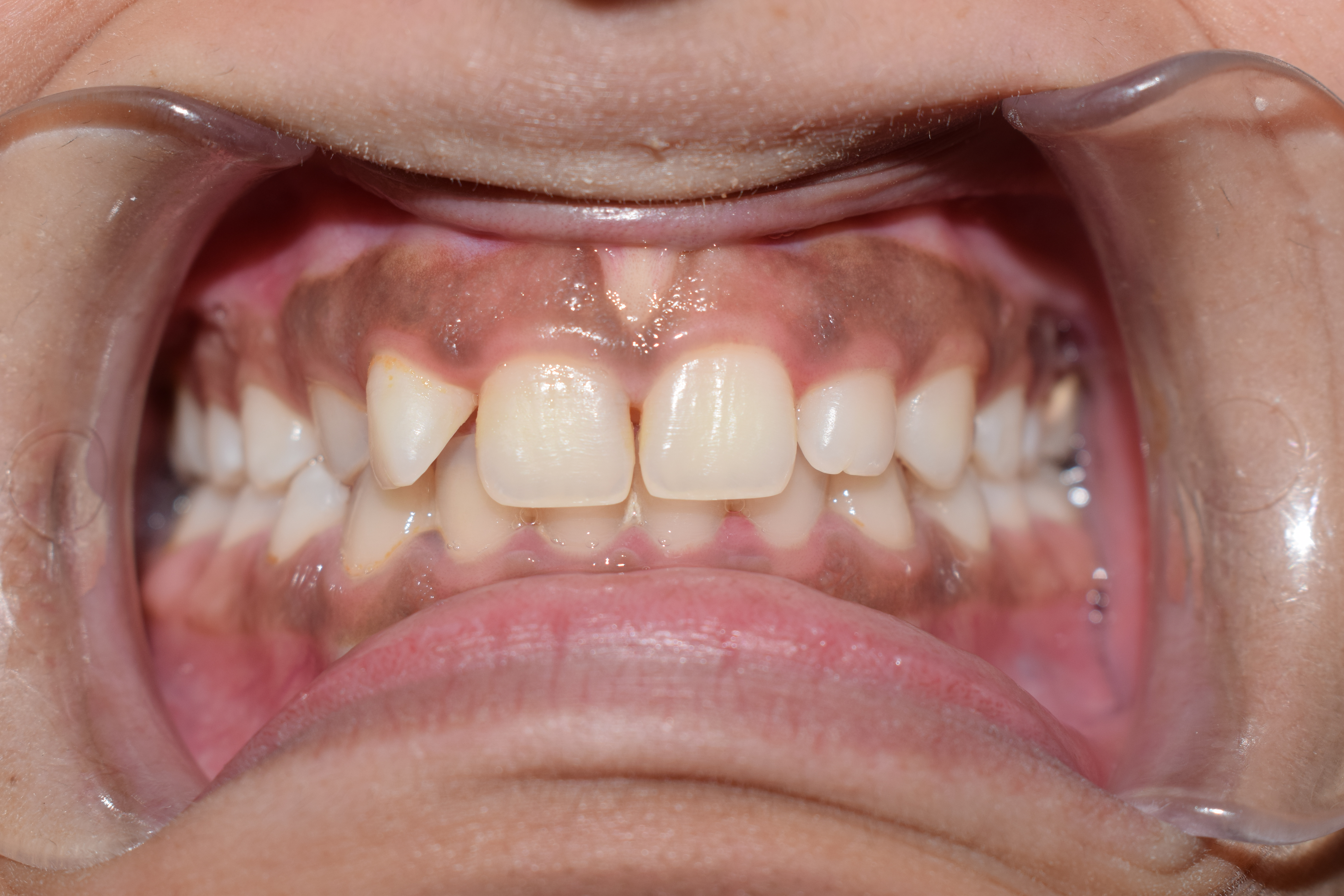|
Parenteral
In pharmacology and toxicology, a route of administration is the way by which a drug, fluid, poison, or other substance is taken into the body. Routes of administration are generally classified by the location at which the substance is applied. Common examples include oral and intravenous administration. Routes can also be classified based on where the target of action is. Action may be topical (local), enteral (system-wide effect, but delivered through the gastrointestinal tract), or parenteral (systemic action, but is delivered by routes other than the GI tract). Route of administration and dosage form are aspects of drug delivery. Classification Routes of administration are usually classified by application location (or exposition). The route or course the active substance takes from application location to the location where it has its target effect is usually rather a matter of pharmacokinetics (concerning the processes of uptake, distribution, and elimination of drugs) ... [...More Info...] [...Related Items...] OR: [Wikipedia] [Google] [Baidu] |
Intravenous Therapy
Intravenous therapy (abbreviated as IV therapy) is a medical technique that administers fluids, medications and nutrients directly into a person's vein. The intravenous route of administration is commonly used for rehydration or to provide nutrients for those who cannot, or will not—due to reduced mental states or otherwise—consume food or water per os, by mouth. It may also be used to administer pharmaceutical drug, medications or other medical therapy such as blood transfusion, blood products or electrolytes to correct electrolyte imbalances. Attempts at providing intravenous therapy have been recorded as early as the 1400s, but the practice did not become widespread until the 1900s after the development of techniques for safe, effective use. The intravenous route is the fastest way to deliver medications and fluid replacement throughout the body as they are introduced directly into the circulatory system and thus quickly distributed. For this reason, the intravenous route ... [...More Info...] [...Related Items...] OR: [Wikipedia] [Google] [Baidu] |
Dosage Form
Dosage forms (also called unit doses) are pharmaceutical drug products presented in a specific form for use. They contain a mixture of active ingredients and inactive components ( excipients), configured in a particular way (such as a capsule shell) and apportioned into a specific dose. For example, two products may both be amoxicillin, but one may come in 500 mg capsules, while another may be in 250 mg chewable tablets. The term unit dose can also refer to non-reusable packaging, particularly when each drug product is individually packaged. However, the FDA differentiates this by referring to it as ''unit-dose "packaging" or "dispensing"''. Depending on the context, ''multi(ple) unit dose'' may refer to multiple distinct drug products ''packaged'' together or a ''single'' product containing multiple drugs and/or doses. Formulations The term dosage form may also sometimes refer only to the pharmaceutical formulation of a drug product's constituent substances, witho ... [...More Info...] [...Related Items...] OR: [Wikipedia] [Google] [Baidu] |
Enema
An enema, also known as a clyster, is the rectal administration of a fluid by injection into the Large intestine, lower bowel via the anus.Cullingworth, ''A Manual of Nursing, Medical and Surgical'':155 The word ''enema'' can also refer to the liquid injected, as well as to a device for administering such an injection. In standard medicine, the most frequent uses of enemas are to relieve constipation and for bowel cleansing before a medical examination or procedure; also, they are employed as a lower gastrointestinal series (also called a barium enema), to treat Travelers' diarrhea, traveler's diarrhea, as a vehicle for the administration of food, water or medicine, as a stimulant to the general system, as a local application and, more rarely, as a means of reducing body temperature, as treatment for encopresis, and as a form of Management of dehydration, rehydration therapy (proctoclysis) in patients for whom intravenous therapy is not applicable. Medical usage The princip ... [...More Info...] [...Related Items...] OR: [Wikipedia] [Google] [Baidu] |
Enteral Administration
Enteral administration is food or drug administration via the human gastrointestinal tract. This contrasts with parenteral nutrition or drug administration (Greek ''para'', "besides" + ''enteros''), which occurs from routes outside the GI tract, such as intravenous routes. Enteral administration involves the esophagus, stomach, and small and large intestines (i.e., the gastrointestinal tract). Methods of administration include oral, sublingual (dissolving the drug under the tongue), and rectal. Parenteral administration is via a peripheral or central vein. In pharmacology, the route of drug administration is important because it affects drug metabolism, drug clearance, and thus dosage. The term is from Greek ''enteros'' 'intestine'. Forms Enteral administration may be divided into three different categories, depending on the entrance point into the GI tract: oral (by mouth), gastric (through the stomach), and rectal (from the rectum). (Gastric introduction involves the use ... [...More Info...] [...Related Items...] OR: [Wikipedia] [Google] [Baidu] |
120310-F-XC314-001 (6979611329)
1 (one, unit, unity) is a number, numeral, and glyph. It is the first and smallest positive integer of the infinite sequence of natural numbers. This fundamental property has led to its unique uses in other fields, ranging from science to sports, where it commonly denotes the first, leading, or top thing in a group. 1 is the unit of counting or measurement, a determiner for singular nouns, and a gender-neutral pronoun. Historically, the representation of 1 evolved from ancient Sumerian and Babylonian symbols to the modern Arabic numeral. In mathematics, 1 is the multiplicative identity, meaning that any number multiplied by 1 equals the same number. 1 is by convention not considered a prime number. In digital technology, 1 represents the "on" state in binary code, the foundation of computing. Philosophically, 1 symbolizes the ultimate reality or source of existence in various traditions. In mathematics The number 1 is the first natural number after 0. Each natural nu ... [...More Info...] [...Related Items...] OR: [Wikipedia] [Google] [Baidu] |
Rectum
The rectum (: rectums or recta) is the final straight portion of the large intestine in humans and some other mammals, and the gut in others. Before expulsion through the anus or cloaca, the rectum stores the feces temporarily. The adult human rectum is about long, and begins at the rectosigmoid junction (the end of the sigmoid colon) at the level of the third sacral vertebra or the sacral promontory depending upon what definition is used. Its diameter is similar to that of the sigmoid colon at its commencement, but it is dilated near its termination, forming the rectal ampulla. It terminates at the level of the anorectal ring (the level of the puborectalis sling) or the dentate line, again depending upon which definition is used. In humans, the rectum is followed by the anal canal, which is about long, before the gastrointestinal tract terminates at the anal verge. The word rectum comes from the Latin '' rēctum intestīnum'', meaning ''straight intestine''. Struc ... [...More Info...] [...Related Items...] OR: [Wikipedia] [Google] [Baidu] |
Stomach
The stomach is a muscular, hollow organ in the upper gastrointestinal tract of Human, humans and many other animals, including several invertebrates. The Ancient Greek name for the stomach is ''gaster'' which is used as ''gastric'' in medical terms related to the stomach. The stomach has a dilated structure and functions as a vital organ in the digestive system. The stomach is involved in the gastric phase, gastric phase of digestion, following the cephalic phase in which the sight and smell of food and the act of chewing are stimuli. In the stomach a chemical breakdown of food takes place by means of secreted digestive enzymes and gastric acid. It also plays a role in regulating gut microbiota, influencing digestion and overall health. The stomach is located between the esophagus and the small intestine. The pyloric sphincter controls the passage of partially digested food (chyme) from the stomach into the duodenum, the first and shortest part of the small intestine, where p ... [...More Info...] [...Related Items...] OR: [Wikipedia] [Google] [Baidu] |
Sublingual Administration
Sublingual (abbreviated SL), from the Latin for "under the tongue", refers to the pharmacological route of administration by which substances diffuse into the blood through tissues under the tongue. Many drugs are absorbed through sublingual administration, including cardiovascular drugs, steroids, barbiturates, benzodiazepines, opioid analgesics, THC, CBD, some proteins and increasingly, vitamins and minerals. Principle When a chemical comes in contact with the mucous membrane beneath the tongue, it is absorbed. Because the connective tissue beneath the epithelium contains a profusion of capillaries, the substance then diffuses into them and enters the venous circulation. In contrast, substances absorbed in the intestines are subject to first-pass metabolism in the liver before entering the general circulation. Sublingual administration has certain advantages over oral administration. Being more direct, it is often faster onset of action, and it ensures that the su ... [...More Info...] [...Related Items...] OR: [Wikipedia] [Google] [Baidu] |
Sublabial Administration
Sublabial administration, literally "under the lip", from Latin, refers to the pharmacological route of administration by which the active substance is placed between the lip and the gingiva (gum) to diffuse through the oral mucosa. Sublabial administration should not be confused with sublingual administration, which is under the tongue. The frenulum of the tongue may be irritated when in contact with corrosive materials but can be avoided with this route. It is usually used for medications such as glyceryl trinitrate (pharmacology), glyceryl trinitrate, for example, in angina pectoris.FASS.se (Farmaceutiska Specialiteter i Sverige – the Swedish official drug catalog) > Suscard (Glyceryl trinitrate)Retrieved on April 25, 2010 Upper lip administration Some drugs are inactive in the digestive tract, but this can be avoided if held between the upper lip and gum. This prevents the substances from getting swallowed with salivation, as would normally occur between the lower lip and g ... [...More Info...] [...Related Items...] OR: [Wikipedia] [Google] [Baidu] |
Gingiva
The gums or gingiva (: gingivae) consist of the mucosal tissue that lies over the mandible and maxilla inside the mouth. Gum health and disease can have an effect on general health. Structure The gums are part of the soft tissue lining of the mouth. They surround the teeth and provide a seal around them. Unlike the soft tissue linings of the lips and cheeks, most of the gums are tightly bound to the underlying bone which helps resist the friction of food passing over them. Thus when healthy, it presents an effective barrier to the barrage of periodontal insults to deeper tissue. Healthy gums are usually coral pink in light skinned people, and may be naturally darker with melanin pigmentation. Changes in color, particularly increased redness, together with swelling and an increased tendency to bleed, suggest an inflammation that is possibly due to the accumulation of bacterial plaque. Overall, the clinical appearance of the tissue reflects the underlying histology, both in hea ... [...More Info...] [...Related Items...] OR: [Wikipedia] [Google] [Baidu] |
Buccal Administration
Buccal administration is a topical route of administration by which drugs held or applied in the buccal () area (in the cheek) diffuse through the oral mucosa ( tissues which line the mouth) and enter directly into the bloodstream. Buccal administration may provide better bioavailability of some drugs and a more rapid onset of action compared to oral administration because the medication does not pass through the digestive system and thereby avoids first pass metabolism. Drug forms for buccal administration include tablets and thin films. As of May 2014, the psychiatric drug asenapine; the opioid drugs buprenorphine, naloxone, and fentanyl; the cardiovascular drug nitroglycerin; the nausea medication prochlorperazine; the hormone replacement therapy testosterone; and nicotine as a smoking cessation aid were commercially available in buccal forms, as was midazolam, an anticonvulsant, used to treat acute epileptic seizures. Buccal administration of vaccines has been studi ... [...More Info...] [...Related Items...] OR: [Wikipedia] [Google] [Baidu] |









